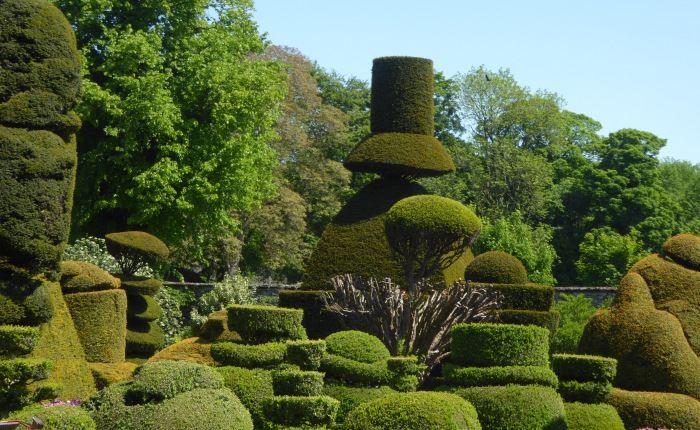Further Travels with Lolly Girl
We were heading to the Lake District from London (and the Porche of previous trips – see link below – was no longer available). Rather than drive from London we decided to catch the train to York, and hire a car there.
We were staying at Sawrey House Hotel, which I had assumed was in Sawrey. The sat nav could not find Sawrey. It found “Near Sawrey” and “Far Sawrey”. Even the hire car people couldn’t find Sawrey. Near Sawrey and Far Sawrey are little villages dating from the 14th century, and it takes 11 minutes to walk between them, so it didn’t actually matter that there was no Sawrey, as such – even though there were signposts suggesting there was. Lolly Girl’s paper maps came into their own.



Sawrey House Hotel sits on 3 acres of gardens, and overlooks Esthwaite Water, with magnificent views across to Grizedale Forest beyond. It was built as a house for a Vicar in the 1830’s – Vicar’s apparently did OK for housing in those days. It is situated in Near Sawrey.
Lolly Girl approved of Gma’s choice of Hotel, and was most enthusiastic when we drove in. She was even more enthusiastic to discover that the hotel was next door to Hilltop, the house Beatrix Potter lived in from 1905, and where she created many of her books. It probably should be said that Gma, a literalist, even as a child, had never found Beatrix Potter’s books to be of any interest at all. Rabbits do not wear blue jackets after all!


We were able to visit several beautiful gardens during our stay, although we did not have time to visit all of them, as we had many other places to explore.
Brantwood House Garden
Some years ago Gma had read and enjoyed John Ruskin’s “Stones of Venice” – a book about Venetian Art and Architecture, first published in 3 volumes from 1851-1853, and she wished to visit Brantwood House, and its surrounding gardens on the shore of Coniston Water. Ruskin lived at Brantwood from 1872 until his death in 1900. He was an English art historian as well as a poet, artist and writer, and Gma was keen to see what kind of garden such a person would create.
The gardens cover an area of 25 acres, created by Ruskin, his cousin Joan Severn and the head gardener Sally Beamish. They are divided into three areas, with eight different gardens.
The first garden leading up from the carpark is the Zig Zaggy, which was designed by Ruskin himself, and is based Dante’s Divine Comedy, telling the story of journey of the soul from hell to heaven. Gma loves The Divine Comedy and is fascinated with all art created which illustrate Virgil’s journey from hell to heaven, so she was very keen to explore this garden. Gma doesn’t think Lolly Girl finds depictions of the soul moving up the various levels of hell to purgatory and then on to heaven as interesting as she does, but she definitely enjoyed the garden. The link below contains a video describing the Zig Zaggy, and the way in which it illustrates the journey of the soul from hell. There are also videos describing the various gardens far more eloquently than I could. https:/www.org.uk/the-gardens-at-Brantwood
A pictorial of our journey through the gardens and views over Coniston Water follows:








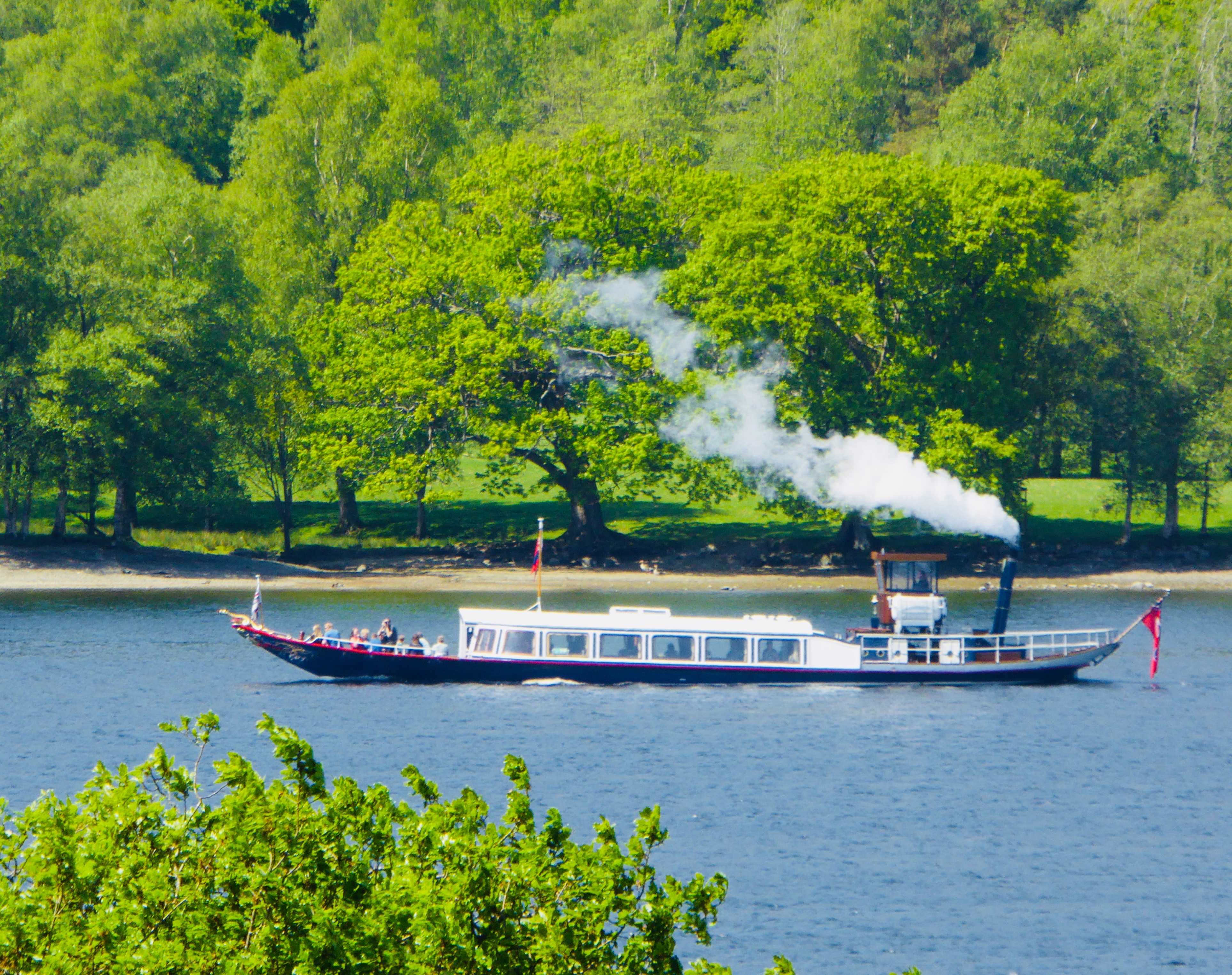
Image directly above – a nod to the Stones of Venice – the steam Gondola.
Our visit was primarily to see the gardens but we did visit Brantwood House, now a museum, which is filled with “stuff” collected by Ruskin, including art, furniture and minerals. The house has glorious views of the Lake, and contains some very nice furniture. Gma is not generally interested in the interiors of the castles, palaces and stately homes in which very privileged people lived their lives – other than their libraries. However, homes of writers, poets and artists, particularly those whose work Gma has read or seen are another matter. It is always interesting to see how these creative people lived, items they created and to view items they accumulated during their lives.

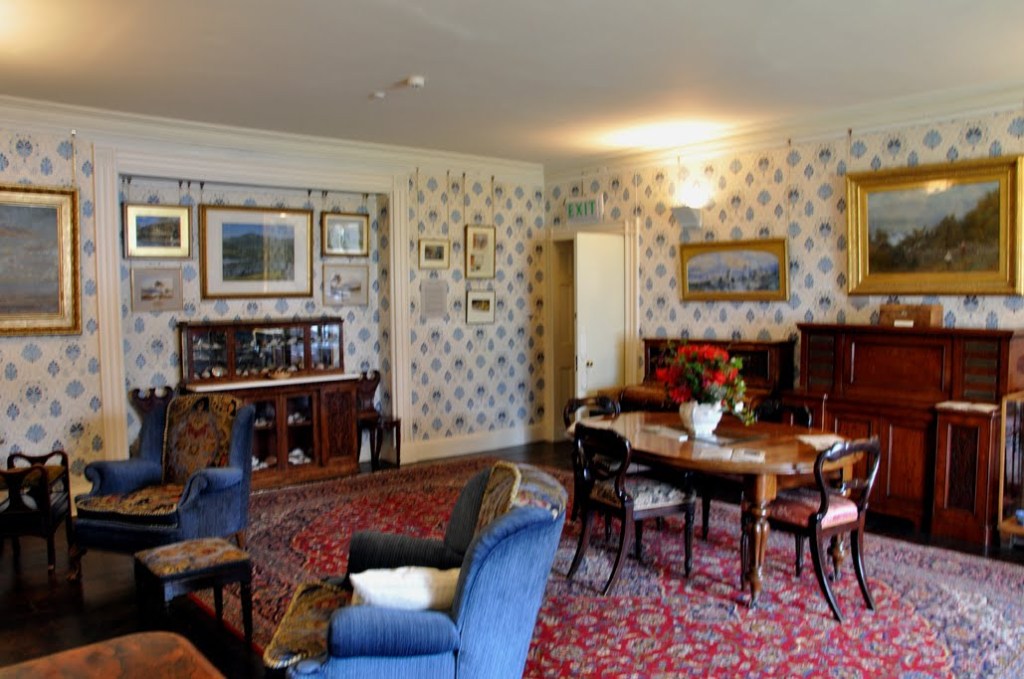

Later that afternoon, relaxing on the terrace at Sawrey House overlooking gardens and Esthwaite Waters we enjoyed watching the sun set down behind Grizedale Forest. Gma emptied the bar of half of its total stock of Prosecco. That is not as bad as it sounds, the bar only had four quarter bottles.







Levens Hall
Levens Hall is not far from Kendal, and is an Elizabethan Mansion which is home to a family, who have held it for over 400 years.


Levens Hall has the most extraordinary topiary gardens, and these were what Gma and Lolly Girl were interested in. Although the house is open to the public, we spent our time there in the gardens and did not visit the the Hall.
Topiary Gardens originated in Roman times around 44BC, and have come in and out of favour over the centuries. The topiary garden at Levens Hall is recognised by the Guiness Book of Records as the oldest topiary garden in the world. It was created by a French gardener, Guillaume Beaumont, gardener to King James II between 1869 and 1712.
The topiary garden at Levens Hall has over 100 specimens, some of which are very old. There are huge abstract shapes and others quite distinct and named, such as king and queen chess pieces. At times, walking around the topiary garden we felt as if we had fallen down the Alice in Wonderland rabbit hole.
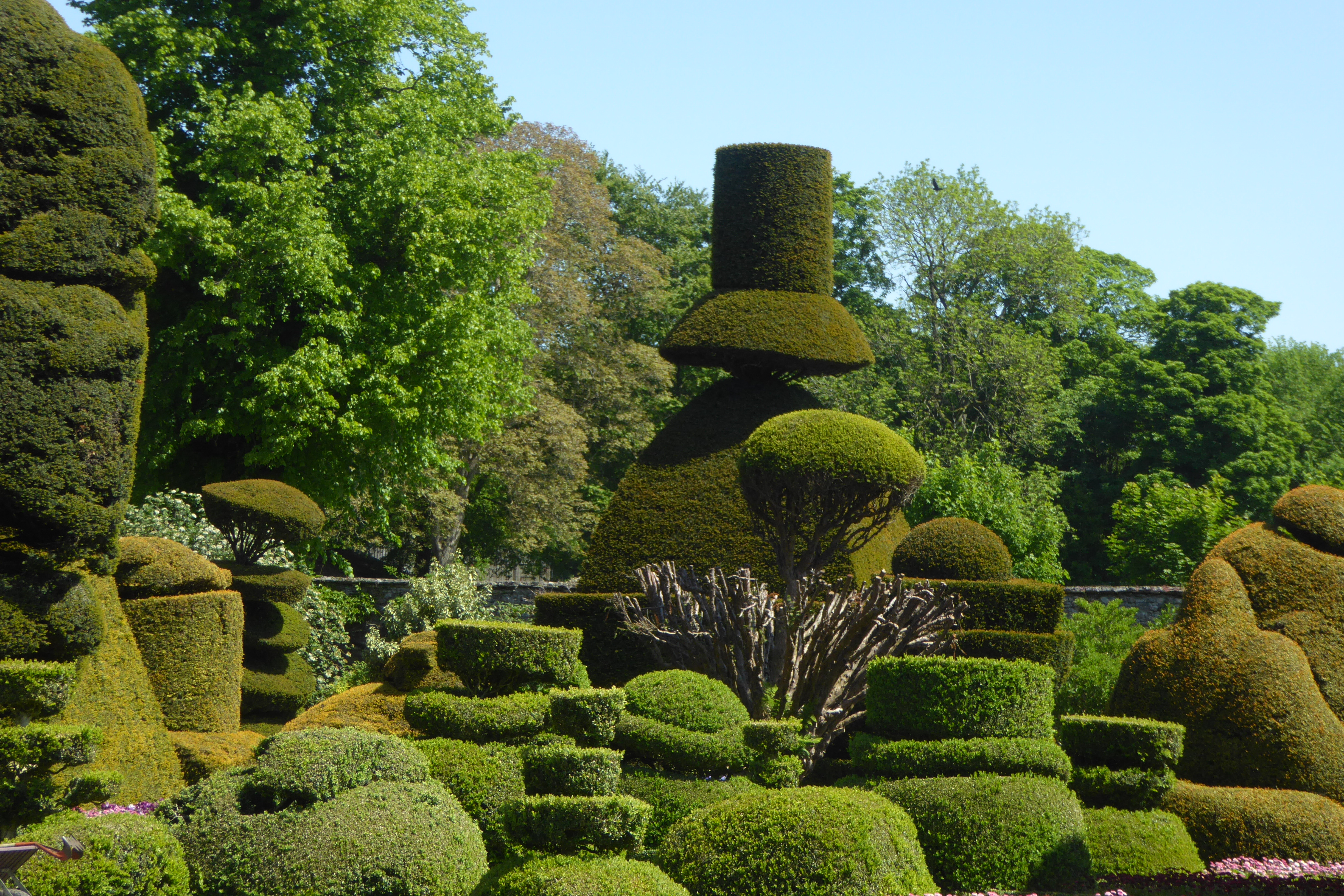





The parterre gardens under the topiary are filled with colourful flowers, which are home grown and bedded twice a year with over 15,000 plants.
There is a lot more to the gardens, beyond the topiary, including an apple orchard, a nuttery and herb garden, herbaceous borders, wildflower meadows, a rose garden planted exclusively with David Austin roses and a fountain garden. In all, there are five acres of gardens, which contain over 100 ancient box and yew trees.

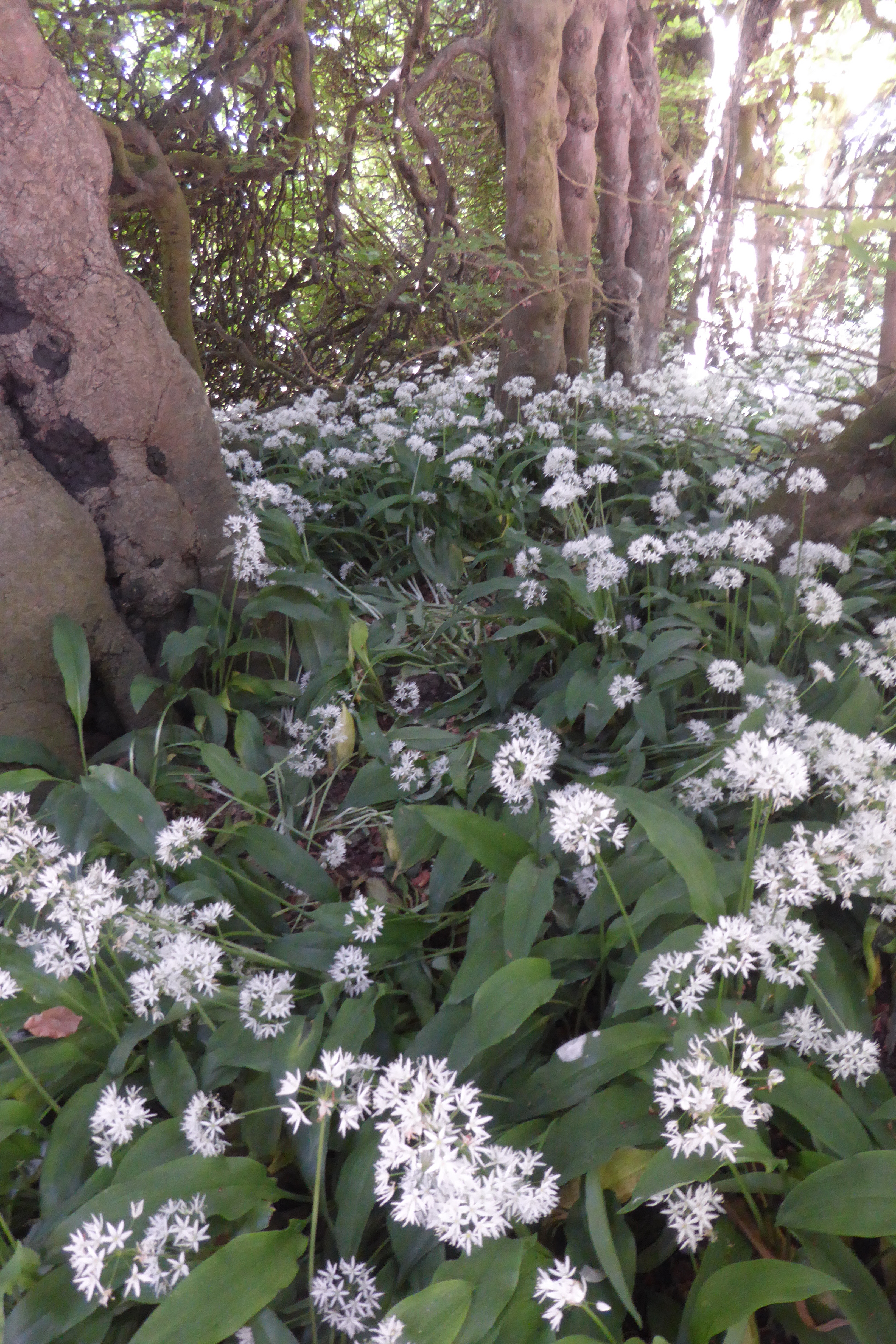
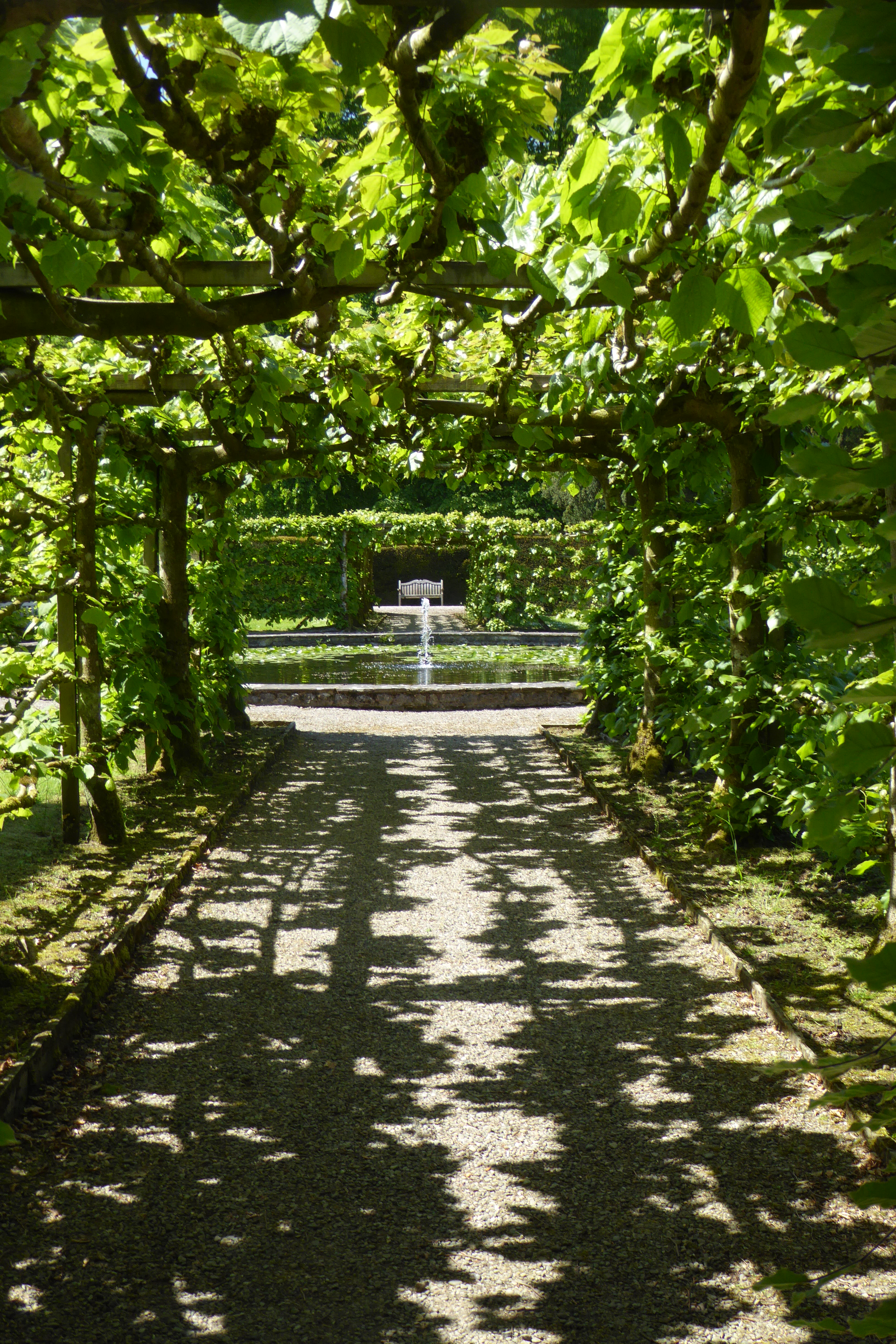



We were told that the garden retains almost all of the essential elements of the garden when initially completed, which is shown on maps of the gardens in 1730.
After leaving Levens Hall, we checked out various restaurants with a view to dining out that evening. Plenty of interesting options. We decided to watch the sunset on the terrace before going out. After the bar ran out of Prosecco, our determination to dine out evaporated – the dining room beckoned us.
Sizergh Castle Garden
Driving on very narrow, almost one lane roads around Sawrey was somewhat challenging as we kept meeting trucks, and vans, which were bad enough, but by squeezing our car right into the hedge on the side of the road, the larger vehicle could get past. The day we went to Sizergh Castle, we won the prize – we met a truck, carrying a house on a corner! The house overhung the truck, on each side, and took up the whole road, and could not be seen coming towards us because of the trees and the bends in the road. We had to reverse until we could find a wider spot, and even then we still had to squeeze the car right into the hedge more or less to enable this behemoth past, which it did very slowly, inch by inch. Lolly Girl was less than impressed when the driver of the monster did not show any appreciation of Gma’s very skilful manoeuvres to let him past.
Sizergh Castle is a Grade 1 listed building, and is has been home to the same family for more than 750 years. It is still their home, although the property is now owned by the National Trust. It is a short drive from Levens Hall, close to Kendall.
The park and garden cover about 6 hectares, and the garden is a registered Grade II garden.
There is a magnificent rock garden, which was constructed in the 1920’s, and covers around 0.1ha. It is constructed with local limestone and is the largest limestone rock garden owned by the National Trust. We enjoyed wandering along the paths discovering different plantings around every corner, including ferns and conifers, with splashes of red leaf acers, providing cheerful splashes of red among the green. Small flowers surround rocks here and there.



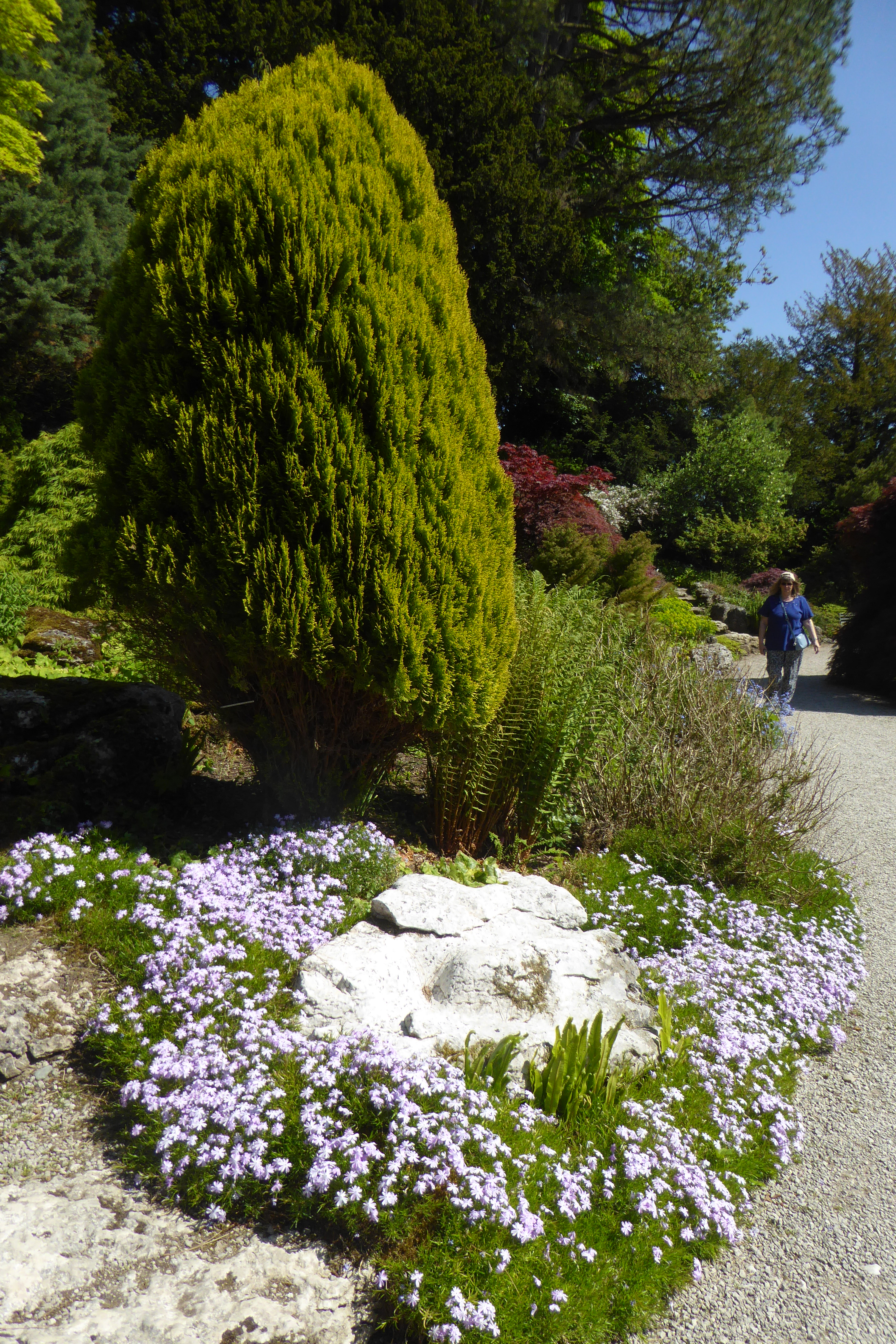


The very picturesque lake is surrounded by lawns, trees, shrubs and gardens. Walking along the pathways around the lake provide views with numerous different perspectives, including views up to the castle. We were delighted to see many swan families sailing majestically around the lake. Reflections of the castle and trees in the lake added to the beauty.






There is a Dutch garden created in 1926, with topiary and clipped box hedges. The topiary was traditional – no Alice in Wonderland stuff here. Herbaceous borders seem to be a speciality in Britain. The one at Sizergh is 50 metres long, and lived up to the tradition of providing a vision splendid.
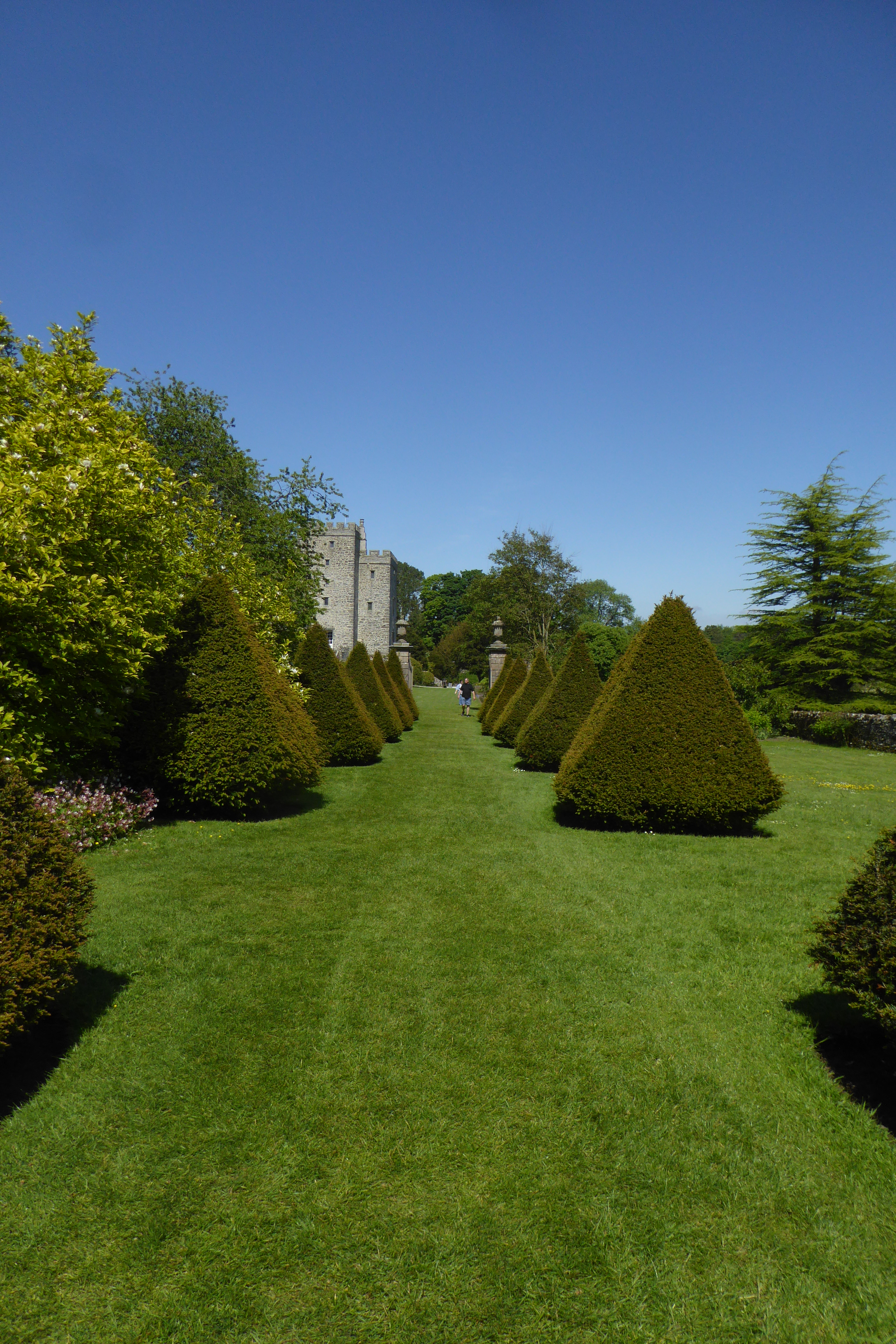


A very large kitchen garden produces food for the cafe. There are open parklands, dotted with mature trees, a wildflower bank, woodlands and wetlands which attract a large number of birds.
Leaving Sizergh Castle, we didn’t even bother to check out possible dinner venues. We knew the Sawrey House Terrace, watching the sunset – with a chilled sauvignon blanc, would seduce us once again.
Beatrix Potter’s garden, although right next door to Sawrey House was never open when we were at “home” , so we had to content ourselves with looking through the trees between the properties.
If you have enjoyed reading about the Lake District gardens, you may like to read my previous garden posts.
Gardens of Stresa, Northern Italy.
